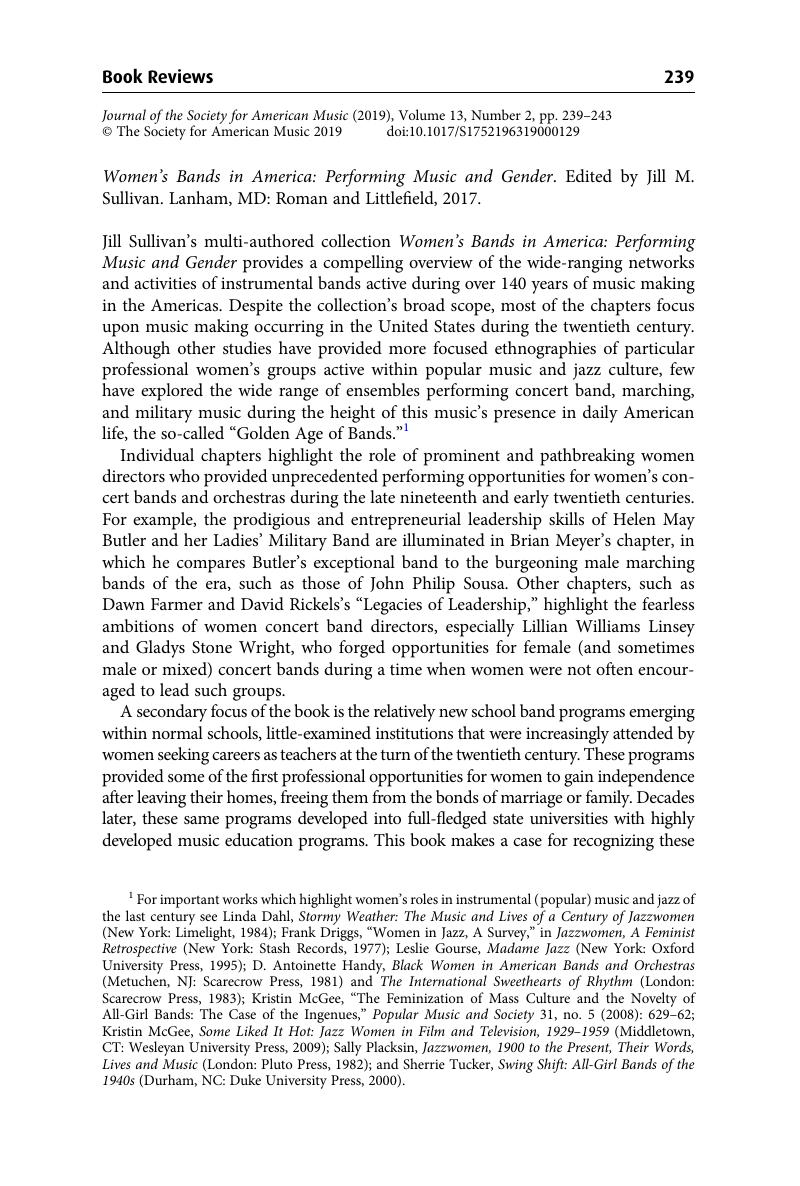No CrossRef data available.
Article contents
Women's Bands in America: Performing Music and Gender. Edited by Jill M. Sullivan. Lanham, MD: Roman and Littlefield, 2017.
Published online by Cambridge University Press: 04 June 2019
Abstract

- Type
- Book Review
- Information
- Copyright
- Copyright © The Society for American Music 2019
References
1 For important works which highlight women's roles in instrumental (popular) music and jazz of the last century see Dahl, Linda, Stormy Weather: The Music and Lives of a Century of Jazzwomen (New York: Limelight, 1984)Google Scholar; Driggs, Frank, “Women in Jazz, A Survey,” in Jazzwomen, A Feminist Retrospective (New York: Stash Records, 1977)Google Scholar; Gourse, Leslie, Madame Jazz (New York: Oxford University Press, 1995)Google Scholar; Handy, D. Antoinette, Black Women in American Bands and Orchestras (Metuchen, NJ: Scarecrow Press, 1981)Google Scholar and The International Sweethearts of Rhythm (London: Scarecrow Press, 1983); McGee, Kristin, “The Feminization of Mass Culture and the Novelty of All-Girl Bands: The Case of the Ingenues,” Popular Music and Society 31, no. 5 (2008): 629–62CrossRefGoogle Scholar; McGee, Kristin, Some Liked It Hot: Jazz Women in Film and Television, 1929–1959 (Middletown, CT: Wesleyan University Press, 2009)Google Scholar; Placksin, Sally, Jazzwomen, 1900 to the Present, Their Words, Lives and Music (London: Pluto Press, 1982)Google Scholar; and Tucker, Sherrie, Swing Shift: All-Girl Bands of the 1940s (Durham, NC: Duke University Press, 2000)CrossRefGoogle Scholar.
2 See Small, Christopher, Musicking: The Meanings of Performing and Listening (Middletown, CT: Wesleyan University Press, 1998)Google Scholar.
3 See, in particular, discussions of the vaudeville-era instrumental bands the Ingenues and Ina Ray Hutton's the Melodears in McGee, “The Feminization of Mass Culture and the Novelty of All-Girl Bands: The Case of the Ingenues” and chapters 1–4 of McGee, Some Liked It Hot.
4 Among others, arguments about the gendering of instrumental swing groups are presented in Tucker, Swing Shift; McGee, Some Liked It Hot; Handy, The International Sweethearts of Rhythm.


